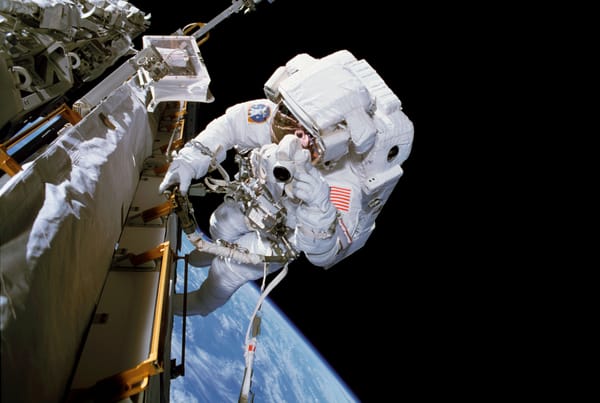Tom Kibble (1932-2016)
Featured image: From left to right: Tom Kibble, Gerald Guralnik, Richard Hagen, François Englert and Robert Brout. Credit: Wikimedia Commons.
Sir Tom Kibble passed away on June 2, I learnt this morning with a bit of sadness that I’d missed the news. It’s hard to write about someone in a way that prompts others either to find out more about that person or, if they knew him or his work, to recall their memories of him when I myself would like only to do the former now. So let me quickly spell out why I think you should pay attention: Kibble was one of the six theorists who, in 1964, came up with the ABEGHHK’tH mechanism to explain how gauge bosons acquired mass. The ‘K’ in those letters stands for ‘Kibble’. However, we only remember that mechanism with the second ‘H’, which stands for Higgs; the other letters fell off for reasons not entirely clear – although convenience might’ve played a role. And while everyone refers to the mechanism as the Higgs mechanism, Peter Higgs, the man himself, continues to call it the ABEGHHK’tH mechanism.
Anyway, Kibble was known for three achievements. The first was to co-formulate – alongside Gerald Guralnik and Richard Hagen – the ABEGHHK’tH mechanism. It was validated in early 2013, earning only Higgs and ‘E’, François Englert, the Nobel Prize for physics that year. The second came in 1967, to explain how the mechanism accords the W and Z bosons, the carriers of the weak nuclear force, with mass but not the photons. The solution was crucial to validate the electroweak theory, and whose three conceivers (Sheldon Glashow, Abdus Salam and Steven Weinberg) won the Nobel Prize for physics in 1979. The third was the postulation of the Kibble-Żurek mechanism, which explains the formation of topological defects in the early universe by applying the principles of quantum mechanics to cosmological objects. This work was done alongside the Polish-American physicist Wojciech Żurek.
I spoke to Kibble once, only for a few minutes, at a conference at the Institute of Mathematical Sciences, Chennai, in December 2013 (at the same conference where I met George Sterman as well). This was five months after Fabiola Gianotti had made the famous announcement at CERN that the LHC had found a particle that looked like the Higgs boson. I’d asked Kibble what he made of the announcement, and where we’d go from here. He said, as I’m sure he would’ve a thousand times before, that it was very exciting to be proven right after 50 years; that it’d definitively closed one of the biggest knowledge gaps in modern theoretical particle physics; and that there was still work to be done by studying the Higgs boson for more clues about the nature of the universe. He had to rush; a TV crew was standing next to me, nudging me for some time with him. I was glad to see it was Puthiya Thalaimurai, a Tamil-language news channel, because it meant the ‘K’ had endured.
Rest in peace, Tom Kibble.



